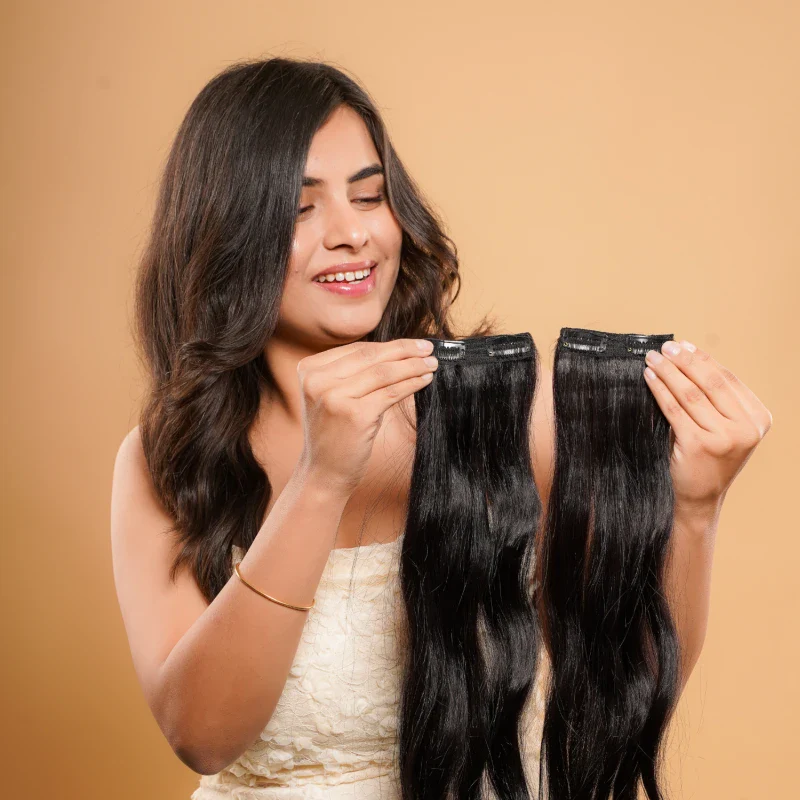Are Hair Wigs and Hair Extensions Safe for Long-Term Use?
Everything You Need to Know for Safe and Stylish Wear – By Smart Hairline
Hair wigs and hair extensions have become popular go-to solutions for people seeking instant volume, length, or complete hair transformation. Whether you’re experiencing hair thinning, medical hair loss, or simply enjoy experimenting with new looks, wigs and extensions offer unmatched convenience. But one common concern remains: Are hair wigs and hair extensions safe for long-term use?
At Smart Hairline, we believe in beauty with care. Here’s a comprehensive guide to help you understand the long-term safety, potential risks, and best practices for using hair wigs and extensions.

Are Wigs and Hair Extensions Safe to Use Long-Term?
Yes, wigs and hair extensions can be safe for long-term use, provided they are used correctly and maintained properly. High-quality hair systems, when chosen and worn the right way, can even help protect your natural hair from environmental damage and heat styling.
However, like any hair accessory, prolonged use without proper care or technique may lead to issues. Understanding the type of hair system you’re using and how it interacts with your scalp and natural hair is key to safe and comfortable long-term wear.
Key Factors That Affect Long-Term Safety
1. Material Quality
- Human hair wigs and remy hair extensions are the safest options for long-term use. They offer natural movement, can be heat styled, and last longer.
- Synthetic options may be more affordable but are less breathable and can irritate the scalp over time.
2. Attachment Method
- Clip-ins and halo extensions are non-invasive and ideal for occasional use.
- Tape-ins, sew-ins, and glue-in extensions can stress your roots if not applied or removed properly.
- Lace front wigs or full lace systems offer great coverage with minimal scalp stress when applied correctly.
3. Scalp Health and Hair Condition
Wearing wigs or extensions for extended periods without breaks can reduce airflow to the scalp, causing irritation or buildup. If your natural hair is already damaged, tension from tight extensions or poorly fitted wigs may worsen the issue.
Tips for Safe Long-Term Use of Hair Wigs and Extensions
- Choose Quality Hair Systems
- Invest in professionally crafted hair systems like those offered at Smart Hairline. Quality matters when it comes to scalp health and durability.
- Practice Good Hygiene
- Clean your wig or extensions regularly to prevent product buildup and bacteria. Always wash your natural hair and scalp before reinstallation.
- Avoid Excessive Tension
- Tight braids or glue-in extensions can lead to traction alopecia over time. Choose gentle attachment methods and let your scalp breathe.
· Give Your Hair Breaks
- Rotate your use of wigs and extensions. Allow time for your scalp to breathe and your natural hair to recover.
· Consult a Professional
- Regular visits to a stylist who specializes in hair systems can help ensure your wig or extensions are applied safely and adjusted to suit your needs.
Long-Term Benefits of Wearing Wigs and Extensions
When used correctly, wigs and extensions can:
- Protect your natural hair from heat styling and chemical treatments
- Offer confidence boosts during hair loss or thinning
- Provide versatility in hairstyles without commitment
- Save time in your daily routine
Final Thoughts
So, are hair wigs and hair extensions safe for long-term use? Absolutely – when chosen wisely and cared for properly. At Smart Hairline, we prioritize your scalp health and personal style. Our expert-designed wigs and extensions are crafted to offer comfort, realism, and long-term wearability.
Ready to find your perfect hair system?
Explore our premium collection of hair wigs, non-surgical hair replacements, and seamless hair extensions at Smart Hairline. Experience confidence, style, and safety — every day.